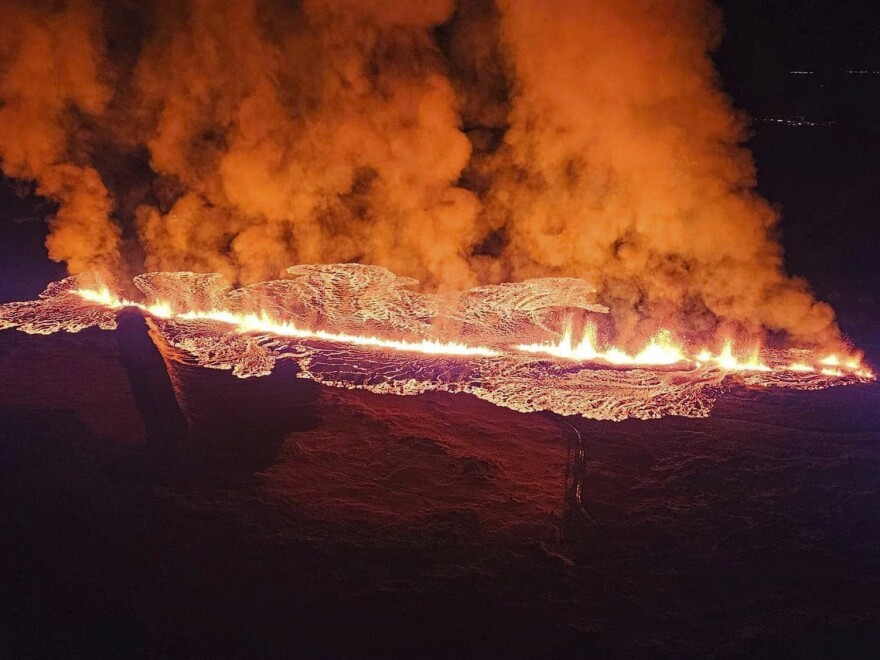REYKJAVIK, Iceland — A volcano in southwestern Iceland erupted for the second time in less than a month on Sunday, sending lava snaking toward a nearby community and setting at least one home on fire.
The eruption, which began just before 8 a.m. local time, came after authorities evacuated the town of Grindavik following a swarm of small earthquakes, the Icelandic Meteorological Office said. Hours later, a second fissure opened near the edge of town and lava crept toward the homes.
"We just watch it on the cameras and there's really nothing else we can do," resident Reynir Berg Jónsson, told Iceland's RUV television.
Grindavik is a town of 3,800 people about 50 kilometers (30 miles) southwest of Reykjavik, Iceland's capital. The community was previously evacuated in November following a series of earthquakes that opened large cracks in the earth between the town and Sýlingarfell, a small mountain to the north. The nearby Blue Lagoon geothermal spa — one of Iceland's biggest tourist attractions — also closed temporarily.

The volcano eventually erupted on Dec. 18, and residents were allowed to return to their homes on Dec. 22.
In the weeks since then, defensive walls had been built around the volcano in hopes of directing lava away from the community. But the walls of the barriers built north of Grindavik have been breached and lava is moving toward the community, the meteorological office said.
"This continues to surprise us," Benedikt Ófeigsson of the meteorological office told RUV. "Things were slowing down after the eruption started, but about half an hour or an hour ago they started to pick up speed again. We are no longer seeing a slowdown in the town."
Iceland, which sits above a volcanic hot spot in the North Atlantic, averages one eruption every four to five years.
The most disruptive in recent times was the 2010 eruption of the Eyjafjallajokull volcano, which spewed clouds of ash into the atmosphere and disrupted transatlantic air travel for months.
But Sunday's eruption on the Reykjanes Peninsula isn't expected to release large amounts of ash into the air. Operations at Keflavík Airport are continuing as normal, said Gudjon Helgason, airport operator Isavia's press officer.
Before last month's eruption, the area known broadly as Svartsengi volcano had been dormant for around 780 years. The volcano is just a few kilometers west of Fagradalsfjall, which was dormant for 6,000 years before flaring to life in March 2021. The latest eruption was more powerful than those in recent years.
Copyright 2024 NPR. To see more, visit https://www.npr.org.


